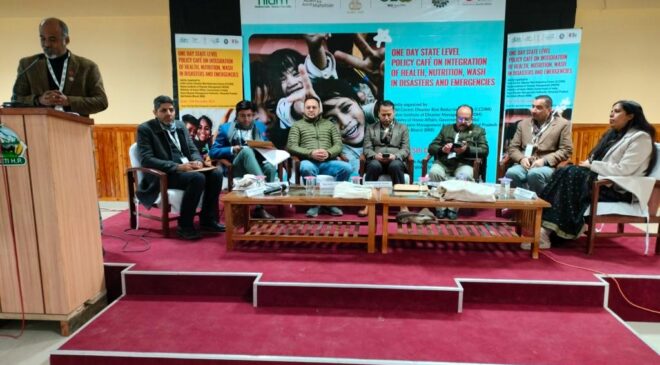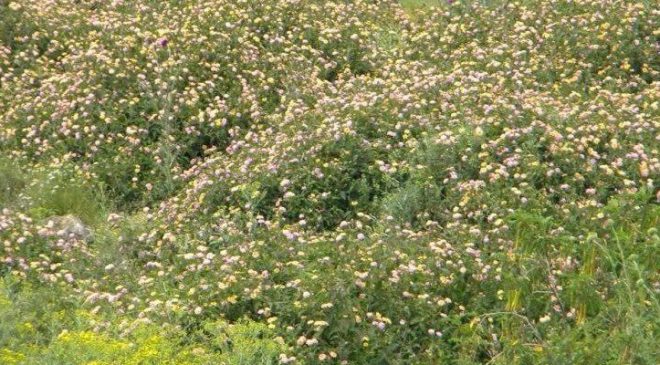15, December, Shimla (Himachal Pradesh) Child Centric Disaster Risk Reduction (CCDRR) Centre, National Institute of Disaster Management (NIDM), Ministry of Home Affairs, Govt. of India is pleased to announce the successful conclusion of the “One Day State Level Policy Café on Integration of Health, Nutrition, WASH in Disasters and Emergencies” in collaboration with State Disaster Management Authority, Himachal Pradesh (HPSDMA) and Bal Raksha Bharat (Also known as Save the Children) at the State Agricultural Management & Extension Training Institute (SAMETI), Shimla. The one-day state level policy café was conducted under…
Read MoreCategory: SCI-TECH
Advancement Of Technology And Human Void
By: Maryam Hedayat Around 52.4% of the global online population access internet from their mobile devices and more than half of the global population is estimated to go online using mobile devices by 2020. LIBYA: The world is just a ‘click’ away from us. Now everything and everyone is available at the touch of a button, Bored? Just a click and all your friends in front of you, shopping mood, click and the varieties and unlimited collection on your screen, want to play video games late night, click the button and vast collection…
Read MoreInvasive Weeds Undermining Farm Productivity, Biodiversity
By : Rakesh Lohumi, Sr. Advisor & Sr. Editor-ICN Group SHIMLA: The Himalayas are a treasure house of medicinal and aromatic plants.With no effective strategy to thwart the march of invasive alien species, which pose a major threat to the indigenous flora, more and more area is being usurped by weeds like lantana, ageratum, parthenium (Congress grass) and eupatorium. The appearance of large gregarious patches of these weeds from the Himalayan foothills in the north to the Tamil Nadu in the south is a matter of grave concern as they pose…
Read MoreWhat is a Logistics Cycle
By : Tejeshwar Singh Rana, Chief Officer-Merchant Navy & Associate Editor-ICN What is a logistics cycle? We know that logistics is all about the efficient coordination of activities involved in the procurement and redistribution of goods and materials.Logistics mainly comprises of but is not limited to procuring goods or materials, storing them, and redistributing to customers. Trading activities of most business organizations across the world go through the logistics cycle. It may include various other ancillary activities such as transporting, packaging, packing, labelling, etc., to name a few. Manufacturers, distributors,…
Read MoreLONG ROUTE DRIVERS & THEIR HEALTH
By : Dr. Akhtar Nasim, Sr. Principal Scientist CSIR-CRRI & Prof. ACSIR (University) & Consulting Editor ICN Science & Tech NEW DELHI: Recently, the health of truck drivers has become a major concern at international levels. Over the years there has been deterioration in driving conditions; simultaneously there is increasing pressures of adhering to the demanding schedule and to make on time deliveries.The drivers have to deal with the failures of the transport system, which results in increased stress levels resulting in adverse impact on the health of drivers. Prolonged sitting,…
Read MoreLONG ROUTE DRIVERS & THEIR HEALTH
By: Dr. Akhtar Nasim, Sr. Principal Scientist CSIR-CRRI & Prof. ACSIR (University) & Consulting Editor ICN Science & Tech NEW DELHI: Recently, the health of truck drivers has become a major concern at international levels.Over the years there has been deterioration in driving conditions; simultaneously there is increasing pressures of adhering to the demanding schedule and to make on time deliveries.The drivers have to deal with the failures of the transport system, which results in increased stress levels resulting in adverse impact on the health of drivers. Prolonged sitting, exposes the driver…
Read MoreInvasive Weeds Undermining Farm Productivity, Biodiversity
By: Rakesh Lohumi, Sr. Advisor & Sr. Editor-ICN Group SHIMLA: The Himalayas are a treasure house of medicinal and aromatic plants.With no effective strategy to thwart the march of invasive alien species, which pose a major threat to the indigenous flora, more and more area is being usurped by weeds like lantana, ageratum, parthenium (Congress grass) and eupatorium. The appearance of large gregarious patches of these weeds from the Himalayan foothills in the north to the Tamil Nadu in the south is a matter of grave concern as they pose a serious…
Read MoreRuthless Exploitation Of Rivers Undermining Mountain Ecosystems
By: Rakesh Lohumi, Sr. Editor-ICN Group SHIMLA: The breathtaking sights and the thunder of the fast flowing Sutlej will be lost to the posterity if all the hydroelectric projects are commissioned over the next decade as planned. The river with the highest power potential in the state will virtually vanish like the mythological Saraswati. A dry river bed dotted with manmade reservoirs built to divert water for power generation will be left as the meandering river will flow only through long tunnels bored underneath the towering mountains as and when its…
Read MoreIncreasing Human Activity Causing Degradation in Himalayan Region Expanding Green Cover Key to Water Crisis
By: Rakesh Lohumi, Sr. Editor-ICN Group After the famous South African city of Cape Town the worst-ever water crisis in India’s premiere hill station of Shimla this summer has raised serious concerns over the growing threat to water security. The unprecedented shortage of water in the erstwhile British summer capital is a pointer to the problems being faced by mountain dwellers due to severe degradation of the ecologically fragile Himalayan region. Increasing human activity in the world’s tallest mountain ranges has started taking its toll in states and state like…
Read MorePhytomining Of Nickel Metal Out Of The Soil
By: Prof. Nand Lal, Dean, Faculty of Life Sciences, Former Pro-Vice Chancellor, C.S.J.M. University, Kanpur Industry needs to be encouraged to adopt new technologies that have the potential to improve mine site rehabilitation outcomes and opportunities, especially in developing countries.Phytomining has several unique features like (1) It offers the possibility of exploiting ores or mineralised soils that are uneconomic by conventional mining methods. (2) ‘Bio-ores’ are virtually sulphur-free, and their smelting requires less energy than sulphidic ores. (3) The metal content of a bio-ore is usually much greater than that…
Read More









